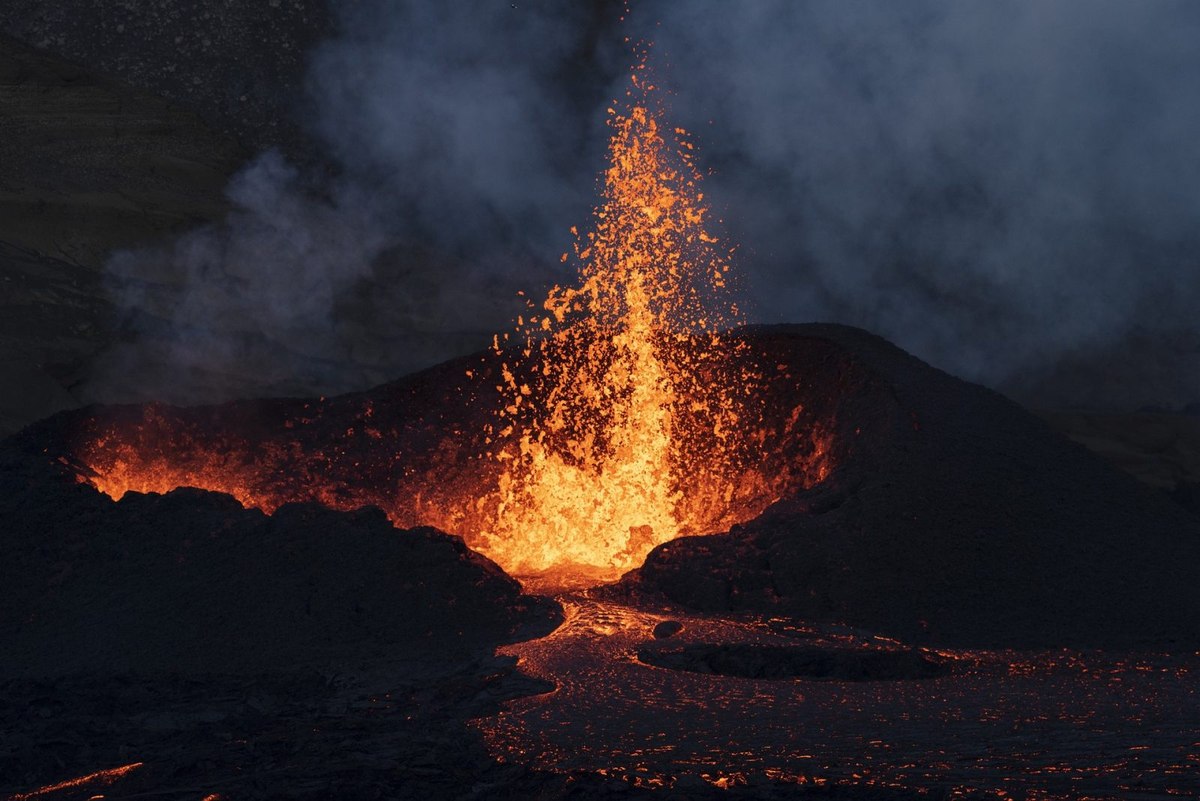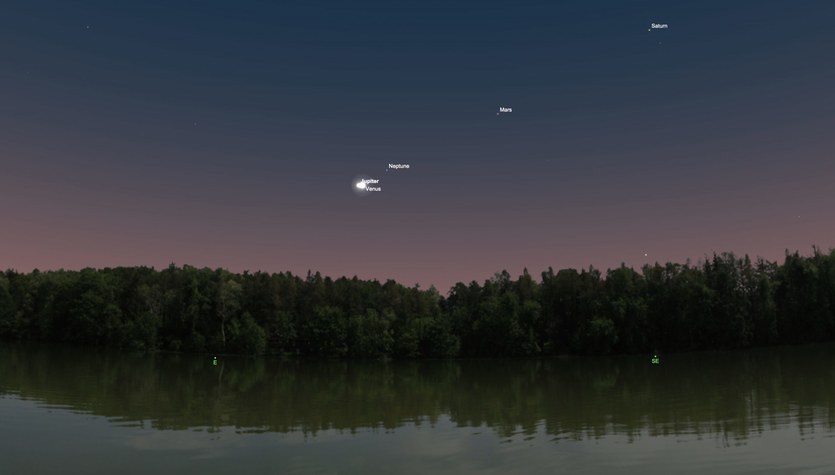Earth, like the other planets in the solar system, was created from a massive planetary disk composed of dust and gas. Then, as a result of the gravitational interaction of particles, the first protoplanets began to form, one of which, at a distance of 150 million kilometers from the Sun, was the Earth.
Read also: Unexplained things happen underground. There is twice the amount of a given ingredient
Our planet was created exactly 4.5672 billion years ago, and from the beginning it was not a friendly place to live. During the first millions of years of its existence, the Earth was likely in a liquid state, with heavier elements falling into its center, forming the core, and lighter elements rising to the surface, forming later layers such as the mantle and crust.

But these processes were interrupted by a very violent event that contributed to the formation of the Moon. Tens of millions of years after Earth formed, it collided with a Mars-sized planet called Theia. It happened at a not very high speed of 7-10 km/s and at a small angle, due to which our planet was not torn apart, but most of Theia’s building materials remained on Earth. As for the rest of the rocky material, soon, perhaps within weeks, as a result of the accumulation, a natural satellite was formed that orbits the Earth to this day.
How were the Earth and the Moon formed? There are several theories about this
The giant impact theory is currently the most widely accepted by the scientific community. Researchers from University of Chicago They add that there are still several alternative versions of the moon’s formation. We are talking here about the theory of fission (the Moon is claimed to have separated from the Earth), capture (the satellite was captured by the Earth’s gravitational field) and co-formation (the Moon was created from the protoplanetary disk at the same time as the Earth).
Read also: Magma comes out all the way from the Earth’s mantle. These volcanoes erupt in a completely different way than previously thought
It is possible that Theia’s impact also contributed to changing the inclination of the Earth’s axis of rotation, and the matter that affected the formation of the original terrestrial magma left an impact on the movements of matter within the planet and contributed to the formation of tectonic processes and the first continents.
Hadek – the first era in the history of the Earth
The first eon in Earth’s history was the Hadean. It precedes the Archean Eon and refers to the period extending from the formation of the Earth to 4 billion years ago. Interestingly, the name Hadeeq comes from… Hades. It was a good choice for a name because the planet was much hotter then than it is now. There were no oceans on the surface, and the atmosphere was devoid of oxygen. The original “air” may have been rich in hydrogen and helium, but solar winds may have dispersed these components.

However, there was a continuing cooling of the planet throughout the Hadean. At the same time, its size increased. It is estimated that when the planet’s radius exceeded 40%. At present length, water would have remained on the Earth’s surface. The exhalation of hot gases and volcanic eruptions from within also enriched the atmosphere with volatile components.
Read also: The continents are on a collision course. A geophysicist tells us how the Earth will change
Recent research conducted by scientists from California Tech University published in Advancement of science It provided some additional information about the source of volatiles in the original atmosphere. It turns out that meteorites (particularly carbonaceous chondrites) that bombard the Earth’s surface in large numbers are also responsible.
The great bombing. When did that happen?
Moreover, we cannot ignore a special episode of major bombardment 3.8 to 4 billion years ago on the Hadean-Paleozoic boundary. Most of the craters on the Moon were formed during this event. The first crust of the earth was also destroyed. Our planet has been subjected to so many meteorite impacts that its surface has temporarily become liquid again.

After the Great Bombardment ended (which is also how this period in the history of the solar system is referred to with a capital letter), the Earth continued to cool. At the beginning of the Archean Eon, the first clouds formed and the first rain fell from them. Oceans were also formed and covered the entire surface of the planet. Plate tectonics also developed slowly. Granite magma, which is lighter than basalt, began to rise enough to form the first continental crust and land.
What was the composition of the Earth’s atmosphere 4 billion years ago? Scientists are still debating the details of this issue, but they certainly have no doubt that free oxygen did not exist in the atmosphere at that time. The air at that time had a reducing nature, not an oxidizing one, as is the case today. In such an atmosphere full of ammonia, methane, carbon dioxide, nitrogen and water vapor, we would not be able to breathe at all.
Read also: The oldest glacier on Earth formed approximately 3 billion years ago
In the early stages of the Earth’s existence, there was another element that was very crucial. We are talking about a magnetic field which, according to the current state of knowledge, is generated in the liquid inner core. According to scientists from University of Rochester 3.5 billion years ago, there was a magnetic field twice as strong as it is today. Without the magnetic field, there would be no life on Earth. It protects the planet’s surface from complete sterilization due to the action of high-energy cosmic radiation particles.

The first oceans, the first lands, and finally the time for the first forms of life to appear
This is how the Earth was formed in the Hadean Era and at the beginning of the Hadean Era. It is believed that at the turn of these two periods, molecules were also created that gained the ability to reproduce (replicate themselves) and thus create life on Earth. These particles were probably created in the so-called primordial soup, i.e. the oceans of that time. There have been many atmospheric discharges on the Earth’s surface, which, in combination with volcanic eruptions and electromagnetic radiation, have supported the process of converting simple materials into more complex materials that can be considered organic.
Read also: The Earth was not intended to support the emergence of life. At the last minute everything changed
How the story unfolded is a topic for another article. But when we look at how the Earth was created and what phenomena it experienced in less than the first billion of its existence, we cannot hide our amazement. It was definitely not a “blue globe” like today, but rather red and yellow – due to the color of the molten lava covering the surface.

Echo Richards embodies a personality that is a delightful contradiction: a humble musicaholic who never brags about her expansive knowledge of both classic and contemporary tunes. Infuriatingly modest, one would never know from a mere conversation how deeply entrenched she is in the world of music. This passion seamlessly translates into her problem-solving skills, with Echo often drawing inspiration from melodies and rhythms. A voracious reader, she dives deep into literature, using stories to influence her own hardcore writing. Her spirited advocacy for alcohol isn’t about mere indulgence, but about celebrating life’s poignant moments.









